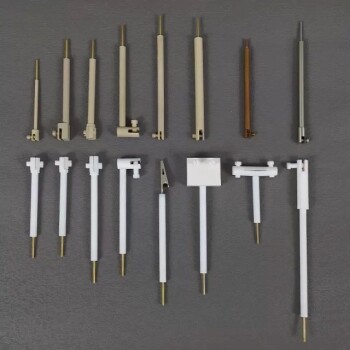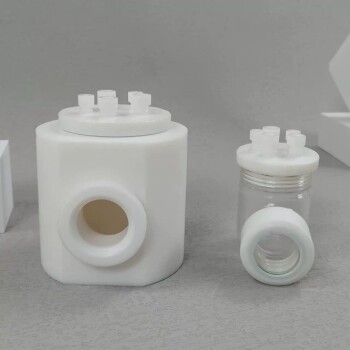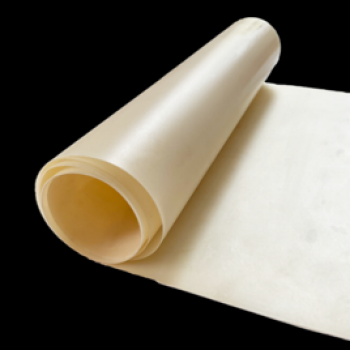Introduction
The rotating electrode method is a powerful tool commonly used in electrochemistry research. It involves rotating a small working electrode to increase the mass transport of reactants and products, allowing for more precise measurements and better control of reaction conditions. This technique has become particularly popular in recent years due to its ability to probe peroxide generating tendencies and investigate electrochemical phenomena. The design of rotating ring-disk electrodes (RRDE) has also improved, allowing for higher collection efficiencies and additional experiments. In this blog post, we will discuss the advantages of the rotating electrode method and its various applications in electrochemical studies.
Table of Contents
Overview of Rotating Electrode Method
The Rotating Electrode Method (REM) is a powerful electrochemical technique used to study the fundamental aspects of electrode reactions. The REM is a hydrodynamic working electrode used in a three-electrode system, which rotates during experiments to provide a constant flux of analyte to the electrode. This enables researchers to study the kinetics of electrode reactions by measuring the current generated by the reaction as the electrode rotates.
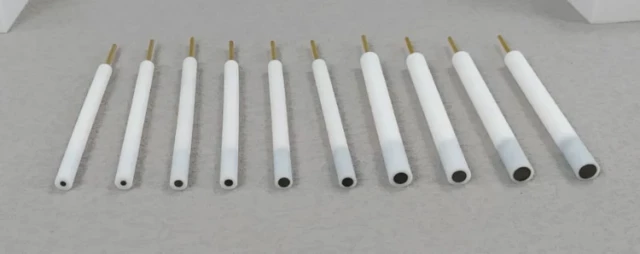
Advantages of the REM
The REM provides several advantages over other electrochemical techniques. One of the main advantages is that it enables researchers to obtain high-quality data with a high level of reproducibility. This makes it an indispensable tool in materials science, corrosion, and energy research. Furthermore, the REM can be used to investigate the effects of various experimental parameters such as temperature, pH, and concentration on the rate of electrochemical reactions.
Probing the Electrode-Electrolyte Interface
Another advantage of the REM is its ability to probe the interface between the electrode and the electrolyte solution. This makes it possible to study the mechanisms of electrochemical reactions in detail, including the rate of electron transfer, reaction intermediates, and the effects of electrode surface properties. By running linear sweep voltammetry and other experiments at various rotation rates, different electrochemical phenomena can be investigated, including multi-electron transfer, the kinetics of a slow electron transfer, adsorption/desorption steps, and electrochemical reaction mechanisms.
Overview of RDE
A rotating disk electrode (RDE) is a type of hydrodynamic working electrode used in the REM. The electrode rotates during experiments, inducing a flux of analyte to the electrode. These working electrodes are used in electrochemical applications such as corrosion studies, fuel cell research, catalyst development, and controlling mass transport of reactants to the electrode surface.
Structure and Function of RDE
The electrode includes a conductive disk embedded in an inert non-conductive polymer or resin that can be attached to an electric motor that has very fine control of the electrode's rotation rate. The disk, like any working electrode, is generally made of a noble metal or glassy carbon, however any conductive material can be used based on specific needs.
The disk's rotation is usually described in terms of angular velocity. As the disk turns, some of the solution described as the hydrodynamic boundary layer is dragged by the spinning disk, and the resulting centrifugal force flings the solution away from the center of the electrode. Solution flows up, perpendicular to the electrode, from the bulk to replace the boundary layer. The sum result is a laminar flow of solution towards and across the electrode. The rate of the solution flow can be controlled by the electrode's angular velocity and modeled mathematically. This flow can quickly achieve conditions in which the steady-state current is controlled by the solution flow rather than diffusion.
Differences from Stationary Electrodes
Potential sweep reversals as used in cyclic voltammetry are different for an RDE system, since the products of the potential sweep are continually swept away from the electrode. A reversal would produce a similar i-E curve, which would closely match the forward scan, except for capacitive charging current. An RDE cannot be used to observe the behavior of the electrode reaction products, since they are continually swept away from the electrode. However, the rotating ring-disk electrode is well suited to investigate this further reactivity. The peak current in a cyclic voltammogram for an RDE is a plateau-like region, governed by the Levich equation. The limiting current is typically much higher than the peak current of a stationary electrode, being that the mass transport of reactants is actively stimulated by the rotating disk.
Advantages of the Rotating Electrode Method
The rotating electrode method is a widely used technique in the field of electrochemistry, offering several advantages over other methods.
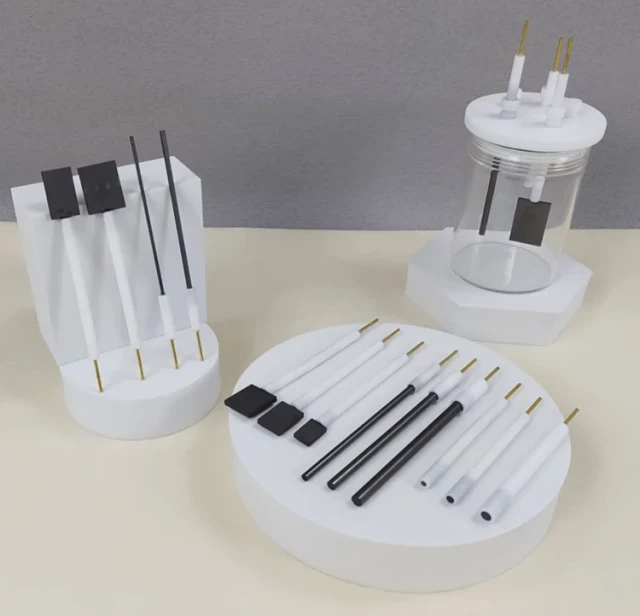
Uniform Electrolyte Distribution
One of the key advantages of the rotating electrode method is that it offers a uniform distribution of the electrolyte solution around the electrode. This is because the electrode is constantly rotating, ensuring that it is constantly exposed to fresh electrolyte. This is essential for accurate measurements of electrode kinetics.
Greater Accuracy and Precision
The rotating electrode method offers a more accurate and precise measurement of electrode kinetics compared to other methods. This is because the electrode is constantly exposed to fresh electrolyte, ensuring that the measurement is not affected by factors such as depletion of reactants or the accumulation of reaction products.
High Sensitivity
The rotating electrode method is highly sensitive and can detect even small changes in electrode kinetics. This makes it an ideal choice for a wide range of applications, including the study of corrosion and electrochemical reactions.
Versatility
Another advantage of the rotating electrode method is its versatility. It requires very little sample preparation and can be used with a wide range of electrode materials. This makes it a cost-effective and versatile technique that can be used in many different applications.
Detecting Multiple Mechanisms
The rotating electrode method also offers the advantage of being able to detect multiple mechanisms in a single experiment. This is because it can be used to study both the kinetic and mass transport contributions to the electrochemical reaction, allowing researchers to gain a more comprehensive understanding of the reaction mechanism.
Real-Time Monitoring
Finally, the rotating electrode method allows for real-time monitoring of the electrochemical reaction. This is because the electrode is constantly rotating, allowing for continuous measurement of the reaction kinetics. This is particularly useful for studying fast reactions or reactions that are difficult to study using other methods.
Overall, the rotating electrode method is a powerful technique that offers several advantages over other electrochemical methods. Its ability to provide accurate, precise, and sensitive measurements of electrode kinetics, combined with its versatility and real-time monitoring capabilities, make it an essential tool for any researcher working in the field of electrochemistry.
Allows for Additional Experiments
The rotating electrode method (REM) is a versatile and efficient technique used in electrochemistry. One of the major advantages of this method is that it allows for additional experiments to be conducted, which can provide valuable insights into various electrochemical processes.
Investigating the Kinetics of Electrochemical Reactions
REM technique can be used to investigate the kinetics of electrochemical reactions. The method involves placing an electrode into a solution and rotating it. The rate of rotation can be adjusted to control the diffusion rate of the reactants, making it possible to study the kinetics of electrochemical reactions.
Determining the Corrosion Resistance of Materials
The REM technique can also be used to determine the corrosion resistance of materials. By placing the material in a solution and rotating it, the researcher can measure the rate of corrosion. This information can be used to optimize the performance of materials in various electrochemical applications.
Studying the Behavior of Electrodes in a Variety of Electrolyte Solutions
REM technique can also be used to study the behavior of electrodes in a variety of electrolyte solutions. By changing the electrolyte solution, researchers can study how the electrode behaves in different environments. This information can be used to optimize the performance of electrodes in various electrochemical applications.
Determining the Properties of Electrode Surfaces
The REM technique can also be used to determine the properties of electrode surfaces, including their roughness and porosity. This information can be used to optimize the performance of electrodes in various electrochemical applications, such as batteries, fuel cells, and sensors.
Conclusion
In conclusion, the rotating electrode method provides a powerful and versatile tool for electrochemists, allowing them to conduct a wide range of experiments and obtain valuable insights into various electrochemical processes. By allowing additional experiments to be conducted, the REM technique has proven to be an important tool for scientists in the field of electrochemistry.
Design Considerations for RRDE
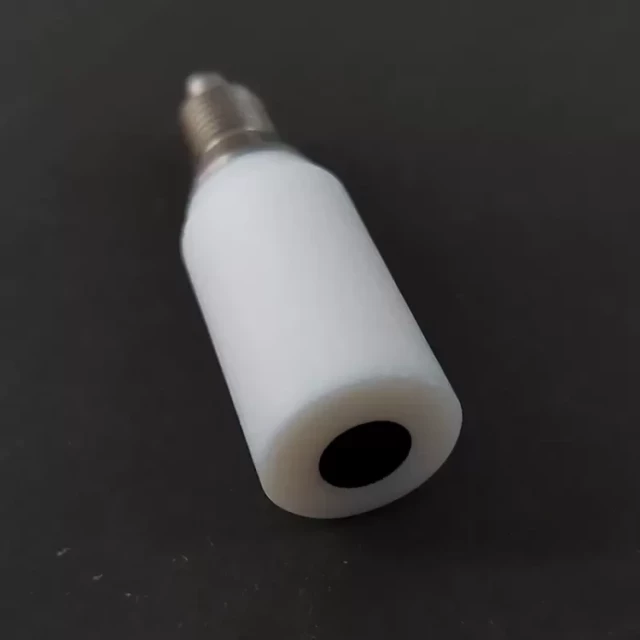
Rotating ring-disk electrode (RRDE) is a critical component of the rotating electrode method (REM) used for electrochemical characterization of materials. The design of the RRDE is essential to ensure accurate measurements. Here are some design considerations for an RRDE:
Selecting the appropriate materials for the electrodes
The choice of materials for the disk and ring electrodes is crucial. The disk electrode material should be conductive and inert, while the ring electrode material should be inert and have a high collection efficiency. Platinum is commonly used for the disk electrode due to its excellent electrocatalytic activity. Gold and glassy carbon are also popular choices for disk electrodes. For the ring electrode, platinum, gold, or silver is typically used.
Designing the apparatus for efficient mass transport
Efficient mass transport to the electrode surface is crucial for accurate measurements. The distance between the disk and ring electrodes should be carefully considered to ensure that there is sufficient mass transport to the ring electrode. The size of the ring electrode should also be carefully chosen to maximize the collection efficiency.
Ensuring the stability and accuracy of the measurements
The stability and accuracy of the measurements depend on several factors, including the rotational speed of the disk electrode, the distance between the disk and ring electrodes, and the instrumentation used to measure the current produced by the disk electrode and the products collected at the ring electrode. The rotational speed of the disk electrode should be constant, and the distance between the disk and ring electrodes should be carefully controlled to ensure that the collection efficiency is high.
In conclusion, the design of the RRDE is critical for accurate measurements in the rotating electrode method. Careful consideration of the materials used for the electrodes, the design of the apparatus for efficient mass transport, and the stability and accuracy of the measurements are essential for successful electrochemical characterization of materials.
Applications of RDE
The Rotating Electrode Method (RDE) is a powerful tool in the field of electrochemistry and has wide-ranging applications in both research and industry. Here are some of the most common applications of RDE:
Kinetic Studies
One of the primary applications of the RDE is to study the kinetic parameters of electrochemical reactions. By rotating the electrode, the mass transport limitations are reduced, and the reaction kinetics can be studied more accurately. This method can be used to measure electron transfer rates and reaction mechanisms.
Electrocatalytic Activity of Materials
RDE can also be used to study the electrocatalytic activity of materials. The current produced during a reaction can be measured, which gives an indication of the efficiency of the reaction. This method is particularly useful in the study of fuel cells and batteries, where it can be used to investigate the efficiency and performance of these devices.
Corrosion Studies
RDE can also be used to study the corrosion of metals. Corrosion is an electrochemical process, and the RDE can be used to measure the corrosion rate of a material. This information can be used to develop new materials that are more resistant to corrosion.
Development of Electrocatalysts
RDE can be used to develop new electrocatalysts for use in energy conversion and storage. By studying the electrocatalytic activity of different materials, researchers can identify those that are most effective and develop new materials that are even better.
Pharmaceutical Research
RDE can be used in the pharmaceutical industry to study the electrochemical behavior of drugs. This information can be used to develop better drug delivery systems and to understand how drugs interact with the body.
Environmental Monitoring
RDE can be used to monitor water quality and detect pollutants. By measuring the electrochemical activity of water samples, researchers can identify the presence of pollutants and determine their concentration.
In conclusion, the Rotating Electrode Method (RDE) is a powerful tool in the field of electrochemistry with a wide range of applications. It can be used to study the kinetic parameters of electrochemical reactions, electrocatalytic activity of materials, corrosion studies, development of electrocatalysts, pharmaceutical research, and environmental monitoring.
Structure and Function of RDE
The Rotating Electrode Method (RDE) is a powerful electrochemical technique used to study the kinetics of electrode reactions. The RDE consists of a rotating disk electrode immersed in a solution containing the reactants of interest. The electrode is rotated at a constant speed, ensuring that the solution is well-mixed, and the concentration of reactants at the electrode surface remains constant. By measuring the current generated by the electrode, the rate of the reaction can be determined.
RDE Components
The RDE consists of three primary components: the working electrode, the counter electrode, and the reference electrode. The working electrode is the rotating disk electrode, and it is the electrode where the reaction of interest occurs. The counter electrode is another electrode that is used to close the electrochemical circuit. The reference electrode is used to measure the potential difference between the working electrode and the solution.
RDE Operation
During RDE operation, the working electrode is rotated at a constant speed, and the current generated by the electrode is measured. The current generated is directly proportional to the rate of the reaction. By varying the rotation speed of the electrode, the rate of the reaction can be measured over a range of reaction rates. The RDE technique is particularly useful in studying fast electrode reactions that are difficult to measure using traditional techniques.
Advantages of RDE
The RDE has several advantages over other electrochemical techniques. One of the significant advantages of the RDE is its ability to measure fast reaction rates. The RDE can also provide information about the mechanism of the reaction, which is not possible with other electrochemical techniques. Additionally, the RDE can measure the rate of mass transfer to the electrode surface, which is critical for understanding the reaction mechanism.
Conclusion
In summary, the Rotating Electrode Method (RDE) is a powerful electrochemical technique used to study the kinetics of electrode reactions. The RDE consists of a rotating disk electrode immersed in a solution containing the reactants of interest. The RDE has several advantages over other electrochemical techniques, including its ability to measure fast reaction rates, its ability to provide information about the mechanism of the reaction, and its ability to measure the rate of mass transfer to the electrode surface. Overall, the RDE is a powerful tool for studying electrochemical reactions and has many potential applications in fields such as energy storage, corrosion prevention, and chemical synthesis.
Related Products
- RRDE rotating disk (ring disk) electrode / compatible with PINE, Japanese ALS, Swiss Metrohm glassy carbon platinum
- Rotating Platinum Disk Electrode for Electrochemical Applications
- Vacuum Sealed Continuous Working Rotary Tube Furnace Rotating Tube Furnace
- Laboratory Vacuum Tilt Rotary Tube Furnace Rotating Tube Furnace
- Electric Rotary Kiln Continuous Working Small Rotary Furnace Heating Pyrolysis Plant
Related Articles
- Comprehensive Guide to Reference Electrodes: Types, Applications, and Selection Criteria
- Introduction to Rotating Disc Electrodes and Common Electrochemical Applications
- Innovations in Electrochemical Electrodes Technology
- Exploring Rotating Electrode Technology in Electrochemistry
- Comprehensive Guide to Rotating Disk Electrode (RDE) in Electrochemical Studies





